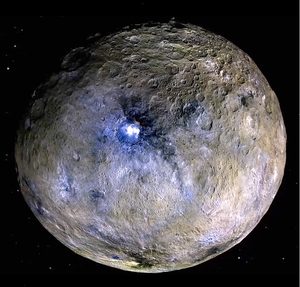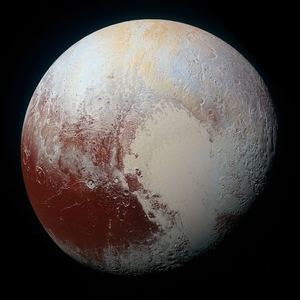Difference between revisions of "Dwarf Planet"
| Line 18: | Line 18: | ||
|} | |} | ||
| − | ==Key Stage | + | ==Key Stage 4== |
===Meaning=== | ===Meaning=== | ||
A [[Dwarf Planet]] is a large lump of [[rock]] [[Orbit|orbiting]] a [[star]] that has enough [[gravity]] to be [[round]], but not enough to have cleared its [[orbit]] of other [[object]]s. | A [[Dwarf Planet]] is a large lump of [[rock]] [[Orbit|orbiting]] a [[star]] that has enough [[gravity]] to be [[round]], but not enough to have cleared its [[orbit]] of other [[object]]s. | ||
Revision as of 20:03, 12 March 2019
Contents
Key Stage 3
Meaning
A Dwarf Planet is a large lump of rock orbiting a star that has enough gravity to be round, but not enough to have cleared its orbit of other objects.
About Dwarf Planets
- There are several known dwarf planets in our Solar System. However, there may be many other dwarf planets that are too far away from The Sun to be seen.
Examples
| Ceres | Pluto |
| Ceres is a Dwarf Planet found in the Asteroid Belt. | Pluto is a Dwarf Planet found beyond the orbit of Neptune. |
Key Stage 4
Meaning
A Dwarf Planet is a large lump of rock orbiting a star that has enough gravity to be round, but not enough to have cleared its orbit of other objects.
About Dwarf Planets
- There are several known dwarf planets in our Solar System. However, there may be many other dwarf planets that are too far away from The Sun to be seen.
Examples
| Ceres | Pluto |
| Ceres is a Dwarf Planet found in the Asteroid Belt. | Pluto is a Dwarf Planet found beyond the orbit of Neptune. |

